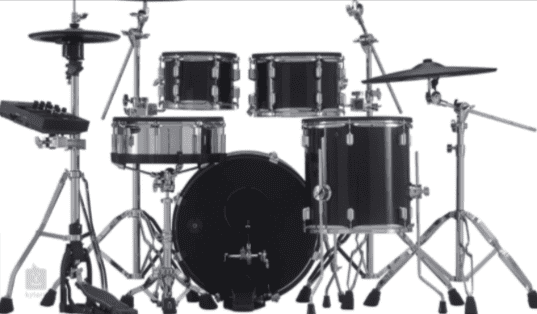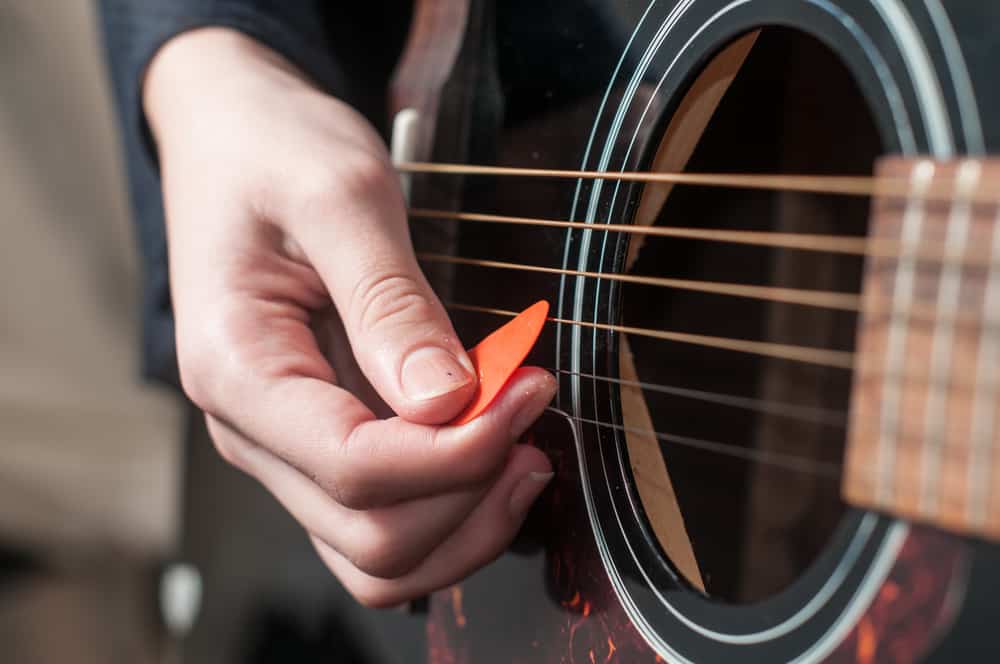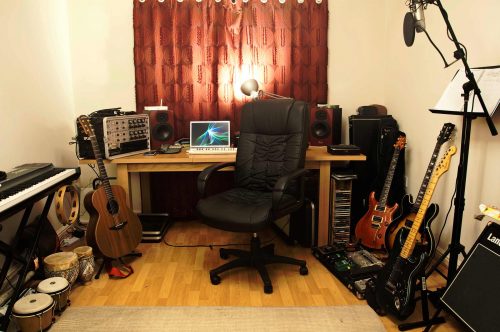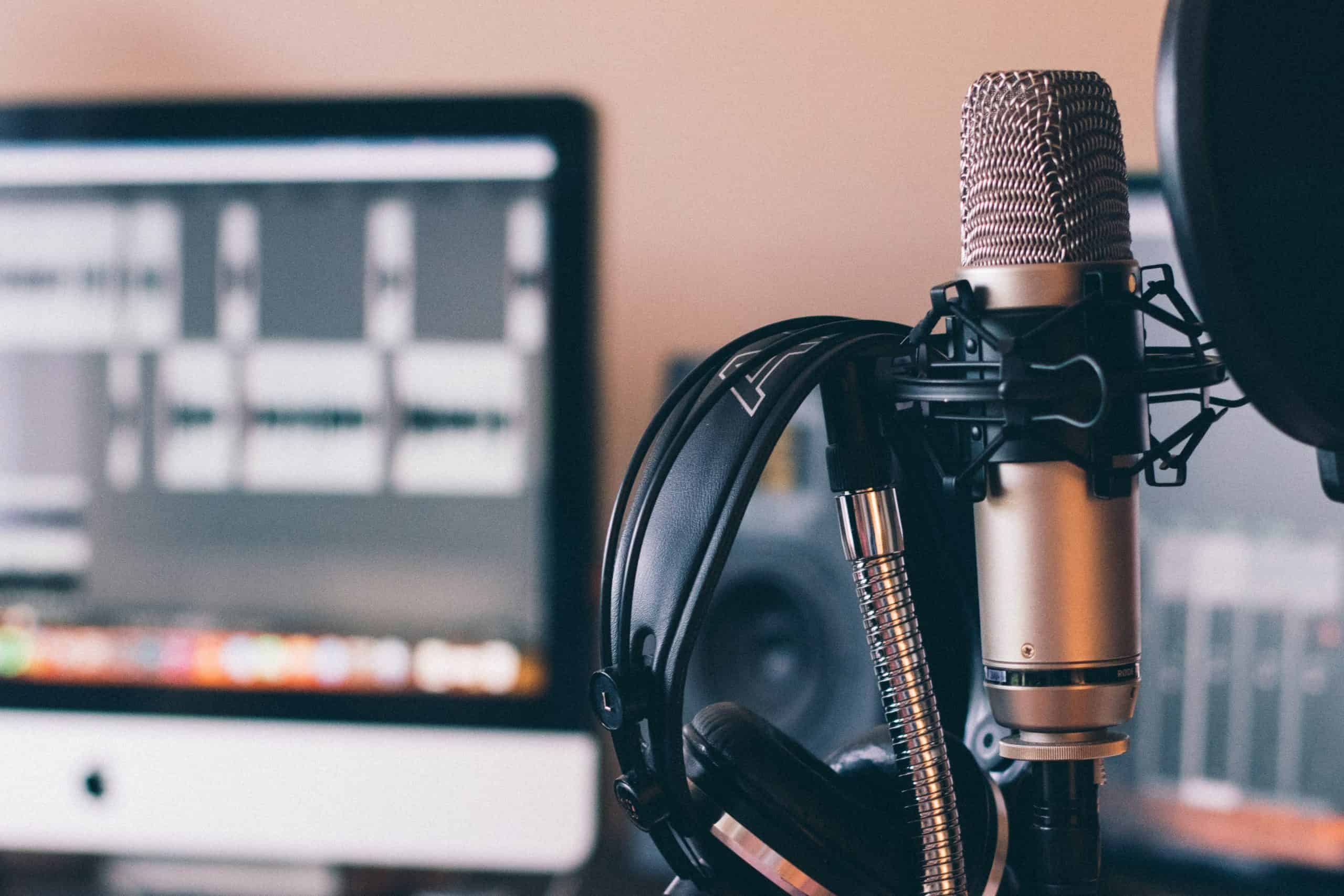How To Learn To Play The Drums At Home
It’s been over a year now, and we’re all still stuck in the house.
You may have learned how to make a frozen frappuccino, you may have picked up a book for the first time in years, and you definitely binged 20+ hours of Netflix documentaries – so you’re looking for something new to learn.
Looking to get a good workout and discover your rhythm? It’s time to march to the beat of your own drum – literally.
Learn The Parts of a Basic Drum Kit
You can’t learn any skill set without understanding the tools required for the skillset – so let’s break down the 4 basic pieces to a drum kit.
Perhaps the most commonly recognized piece of a kit, the snare, is the most centralized drum of all 4 pieces. It sits directly in front of the drummer, and produces a strong “staccato” sound from a set of wires embedded inside the actual drum body.
You might recognize the snare drum from a movie called “Drumline”, starring Nick Cannon.
The bass is the largest drum of the kit. It boasts the deepest and lowest sound of all pieces to a drum kit. It is also often referred to as a “kick drum”, because of the kick pedal attached to it at the floor.
You kick that pedal, you’ll get the nice loud “boom” noise you would expect.
You can find the third piece, the tom tom, mounted above the bass drum. The tom tom is utilized for drum patterns and drum fills.
Hi-hats are one of the most easily recognizable pieces to a drum kit. The two pieces, usually gold plated cymbals, are attached to each other and collide when a pedal is pushed by the drummer.
Hi hats can act as a transition between song passages, and add flair or accents to a piece of music.
Additionally, some drum kits might come with other cymbal options that are referred to as crash and ride cymbals – which are essentially hi hats, in different sizes.
Boom – there you have it. 4 pieces to a basic drum kit: snare, bass, tom tom, and hi-hat.
If you can wrap your head around that, you’re off to a great start on your drumming adventure.
Learn Basic Music Theory
Anyone can smash a drum, but not everyone can read sheet music, or understand the timing and accuracy necessary to play an instrument.
To get yourself started on a good note, pun intended, you need to learn the musical alphabet and have good knowledge of intervals, scales, and chords.
Without these things, you won’t be able to read musical notes, which makes it pretty hard for you to pick up drum solos from your favorite songs.
It’s quite simple when it comes to the musical alphabet. There are a total of 7 notes, ABCDEFG – and you can play each note at a different octave, or pitch. This might take a few days of practicing to understand, but it’ll come to you easily after that.

After learning the musical alphabet, it’s time to put those notes together to create scales. Scales are a group of notes in order of pitch.
Scales are sometimes used as a learning exercise that musicians use to practice reflexes and timing. They are progression based.
A chord is a group of 3 or more notes. Chords bring songs to life, they provide music with fluidity and mood. These groups of 3 notes are called triads.
The final basic pillar of music theory: intervals. Intervals can best be described as the distance between notes or chords. Intervals provide music with space for delivery, and allow musicians to harmonize and melodize.
Melodic intervals allow for musicians to play notes back to back, whereas a harmonic interval allows musicians to play two notes at the same time.
If you can study up on these music theory concepts, you can bet that you’ll be able to play your favorite songs if you want to. Study up!
Practice The Fundamentals
Once you understand the basic pieces to a drum kit, and can read music, you need to start smashing that drum set!
Like literally anything in this world, you can’t get better at something by not doing it. Similar to other hobbies, getting into drumming can be daunting due to the pricing of starter drum kits, as well as the amount of space one might take up.
To counter this issue, there are plenty of practice pad options out there, which are essentially a smaller, quieter option if you want to get started before spending upwards of $500 on a solid drum kit.
Some of these practice pads can cost under $50, and include a snare, bass, tom, and hi hat sections.

These are usually rubber padded, so they won’t piss off your neighbors or roommates with annoyingly loud noises during your 3 AM practice sessions.
Some drummers start off their practices by gradually moving from drum kit piece to drum kit piece. Some drummers might hop on their drums and just start pounding away at their favorite warm up songs or patterns.
The beauty of music is that there is no one way – you can learn at your own pace and you can decide how your progression looks.
If one thing should stay consistent every time you play: always warm up your wrists, arms, and shoulders – and always play your heart out.
Listen To Professionals
This goes two ways: listen to drummers of bands you’re a fan of – and listen to your local drum teacher! Looking for advice and expertise might feel like it can be tough – but with the beauty of the internet, you have an almost unlimited amount of experts you can learn from and listen to.
Like almost any skill set, finding a mentor to help you sharpen that skillset is an incredibly valuable idea.
To use an example not related to drumming, I’ll draw from my own heavy interest in photography.
I’ve looked up to plenty of professional and amateur photographers over the years, and I try to draw inspiration from their work often. I buy their books, I listen to their podcasts, and I keep up with them on social media.
By doing this, I feel I am exposing myself to plenty of inspiration and motivation to be a better photographer.
Try to surround yourself with plenty of different avenues of drumming knowledge, whether that be going to a local drum teacher – or joining an online drumming group on Facebook. Exposure leads to expansion!
YouTube is a great resource for those wanting to learn to play the drums. There are hundreds of thousands of videos on tutorials for learning rhythm, understanding how your individual drum pieces work, and even reviews on the best sticks and kits.
It’s also a great place to find insider secrets and do’s & don’ts of drumming. A simple YouTube session can help you learn by seeing as well as doing, especially if you feel shy about starting out.
Hold Sticks Properly
You can do everything I’ve told you to do, but without being able to properly hold your drumsticks in your hand, bringing music to life will be tough.
Perhaps one of the toughest things to get used to is finding that comfortable grip in your hands.
I’ve known drummers to change their stick holding style over the years and I’ve also known drummers to hold their sticks the same way their whole lives.
Again, there is no right answer for this section. I’ll break down the two most common grips, and I’ll provide you with a resource to do more research on grip holding techniques.

Most drummers use what’s called a matched grip. This type of grip is best characterized by having both of your hands turned down on the stick.
Many other drummers use a grip that is called a traditional grip, which features one hand turned up on a stick and one hand turned down on a stick.
One thing all drummers will advise someone new on the sticks to avoid: death grip.
Death grip is best characterized as holding your drumsticks so tight that you cannot achieve fluidity and precision while hitting drums.
Not only will this affect the sound of the drumming, it can easily leave you injured. Stay loose, warm up, and avoid death grip!
Check out this great Youtube video on stick holding and other grip styles here.
To tie everything together, learning something new is never easy. That is the fun and beauty of taking on a challenge like this, though.
There is no glory without struggle, and if something were easy – everyone would be doing it.
During a worldwide lockdown, maybe you start with purchasing a practice drum pad, find some online drum teachers or lessons, and dive deep into the world of drumming.
If you’re reading this article, it’s clear you’re committed to picking up this new exciting skill, so get out there and enjoy it. Cheers to your future progression as a drummer!










